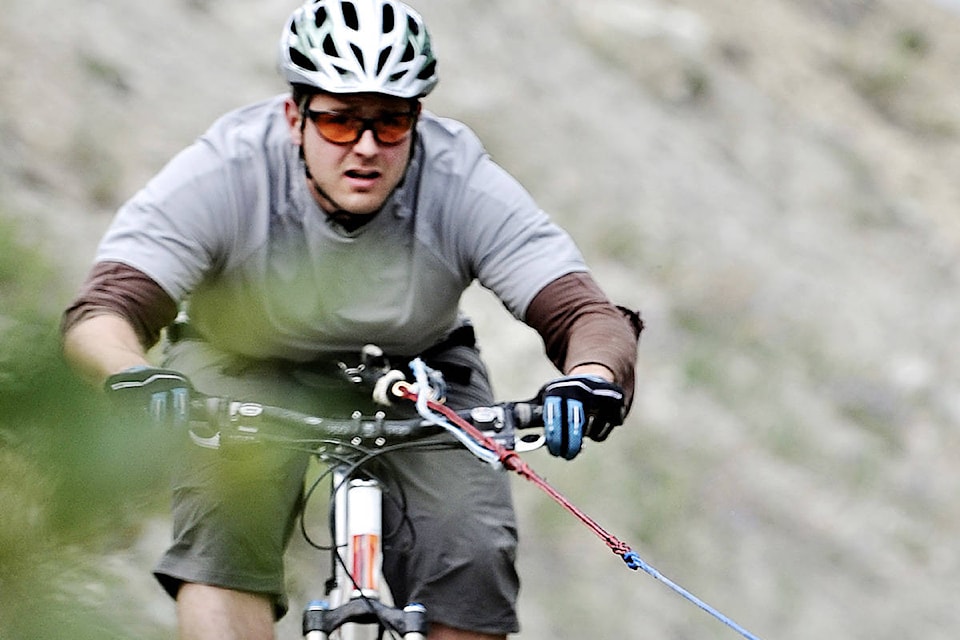A court in Whitehorse heard from two expert witnesses — one on forensic firearm and ballistics analysis and another on bloodstain pattern analysis — as the first week of Darryl Sheepway’s first-degree murder trial drew to a close.
Sheepway stands accused in the August 2015 death of Christopher Brisson, 25, whose body was found at the bottom of a steep slope in Miles Canyon by a mushroom picker.
The court heard earlier this week that Sheepway has already admitted to fatally shooting Brisson, his crack dealer, after asking him to meet at McLean Lake Road under the guise of paying him back and buying more drugs. At issue is not whether Sheepway killed Brisson, but the circumstances surrounding the shooting. Sheepway had previously offered to plead guilty to a lesser charge of manslaughter, an offer rejected by the Crown.
Testifying as an expert for the Crown, forensic firearm and ballistics analyst Joseph Prendergast told the court Nov. 8 that he’d been asked to examine the shotgun slug retrieved from Brisson’s body at autopsy as well as Brisson’s pickup truck.
The slug found in Brisson’s body was consistent in size and weight with a one-ounce Winchester slug, Prendergast said, and the gun it was fired from was a 12-gauge pump-action Remington. Opening an evidence box that was propped up against the witness stand, Prendergast then brought out the gun itself, showing the court how it would be loaded, racked and fired.
In Brisson’s truck, Prendergast confirmed he identified two definite object trajectories — in this case, almost certainly the path of two shotgun slugs, due to the amount of lead residue found around the holes left in the truck. Both objects, based on fractures in the remnants of the rear cab window, a cratered hole in the windshield and hole that went through the driver’s side headrest, moved from the back of the truck to the front, Prendergast said.
Prendergast said the slug that went through the headrest caused no further damage to the vehicle. Asked by the Crown what he could infer from that, Prendergast replied that when he sees bullet holes in seats and no additional damage to the vehicle’s interior, he assumes the bullet went into whoever was sitting in the seat.
The Crown also showed Prendergast photos of an RCMP “staging” where investigators had an officer the same height as Brisson sit in the driver’s seat of his truck and lean towards the passenger’s side, a trajectory stick going through the hole in the driver’s headrest.
Prendergast agreed that, combined with the trajectory of the slug, sitting in that position when the slug went through the headrest would cause a wound similar to the one documented in Brisson’s autopsy — a large hole in the back, just below the left shoulder.
Among the details Prendergast said he couldn’t determine, though, were where exactly the two slugs entered the truck’s rear window — there simply wasn’t enough left of the window to say — how close the gun was when the shots were fired or how fast the slugs were moving.
Following a lengthy cross-examination of Prendergast by one of Sheepway’s lawyers, Vincent Larochelle, the Crown called its next witness to the stand.
RCMP Sgt. Alison Cameron testified as an expert on bloodstain pattern analysis and crime scene examination. Like Prendergast, investigators also asked Cameron to examine Brisson’s truck after it was recovered from the brush on the side of McLean Lake Road.
Cameron told the court she conducted the analysis on May 2016 and located spatter stains — basically, bloodstains created by “external force” being applied to “a source of blood” — on the truck’s headliner, passenger headrest, coat hook, overhead light and dashboard below the steering wheel, with the greatest concentration of bloodstains found above the driver’s seat. The shape of the bloodstains indicated that the blood had moved through the air from the driver’s side of the truck towards the passenger’s side, Cameron said, and were consistent with the blood source — in this case, Brisson — being in or near the driver’s seat.
Cameron also found a second set of bloodstains on the side of front middle seat. These ones, she explained, were drip stains, which are created when blood drips on a surface and then flows downward due to gravity.
As well, Cameron said she found a transfer bloodstain, created by a surface “contaminated” with blood coming into contact with another surface, on the passenger’s headrest.
The trial continues.
Contact Jackie Hong at jackie.hong@yukon-news.com
